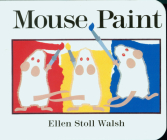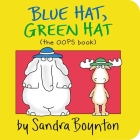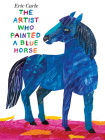You make an awesome Miss Rumphius. I can totally see Mary Poppins in your future, too.
Aside from reading a ton of college essays my students write, and writing a ton of college recommendations, I tend to allow the application process to be background noise in my classes. My students are all so college-crazed at this time of year that I think allowing too much talk about it into the classroom would be unhealthy -- it sucks all the air right out. So let's move on from the SAT question to a different level of learning.
Colors. I remember when Eleanor was learning concepts that I was struck by the fact that colors didn't come to her earlier. She got shapes first, and opposites, but color recognition lagged. Isabel is the same way, perhaps even more so. In recent weeks, she's started commenting on the colors of things, but she gets them wrong probably 95% of the time. While she knows all the words for all the colors, she seems unable or uninterested in matching them up correctly. We've recently started trying to reinforce the concept that color words refer to specific colors. We'll ask Isabel what color her blue bowl is, and she'll say, brightly, "Pink!" or "Green!" (That is, until Eleanor whispers the right answer.)
So maybe she's color-blind? Or maybe it's just time for us to put a few of our favorite color-related books into the rotation.
We've mentioned the wonderful I Love Colors before. It's one of my top-favorite board books -- so totally joy-filled, especially on the last page:
I also really like the Colors section in Food for Thought:
Skewing a little more in-depth on the concepts, here are three of our favorites:
Blue Hat, Green Hat, by Sandra Boynton. On each page, a series of animals wears items of clothing in different colors: "Blue Hat, Green Hat, Red Hat, Oops." The "Oops" at the end of each page refers to the turkey, who puts on all her clothes wrong: she's standing in her hat, or wearing pants on her head, or sticking socks on her wings, all with this lovely, slightly cross-eyed smile as the other animals grow increasingly perturbed:
Blue Hat, Green Hat has a terrific rhythm to it. Even before Eleanor was old enough to understand why the turkey wearing everything upside down was funny, she liked reading it. Once she got the joke, she found it hysterical.
You recently sent us Eric Carle's latest book, The Artist Who Painted a Blue Horse. It is a huge hit. The other Carle books we own are in board book format, but this one benefits hugely from the large-format pages. It has few words, and joyful, bright, large paintings on each page.
The book begins with a painting of a child of indeterminate gender painting on a large canvas. The text reads:
I am an artist
and I paint...Each successive page is an animal the artist paints, all in unexpected colors: a blue horse, a red crocodile, a yellow cow, a black polar bear. After a series of these great double-page spreads, the artist stands back from the canvas, paint on the floor, to say, "I am a good artist."
It's a simple, clear, exuberant book. Carle credits Franz Marc, painter of the original blue horse, as his inspiration, and includes a reproduction of one of Marc's paintings at the end. Isabel has started saying, "I am a good artist," a catchphrase I'm happy to encourage.

Finally, there is Mouse Paint, by Ellen Stoll Walsh. This one is about color mixing. Three white mice live on a white sheet of paper, so the cat can't see them. One day, they find three jars of paint in primary colors. They climb into the jars, covering themselves, then dance in puddles of paint to make secondary colors: "Look! Red feet in a blue puddle make purple!" The paint makes them sticky, so the mice wash themselves off (in the cat's water bowl, natch) and paint on the paper in both primary and secondary colors.
I love the way the narrative allows you to encourage your child to guess what the two mixed colors will form, and the mice are quite appealing. The one thing I wish this book had is a picture of the final painting: I imagine a Mondrian-like canvas, huge and blocky. I want to know what the mice create.
I'm assuming this will all sink in someday....
Love, Annie




No comments:
Post a Comment